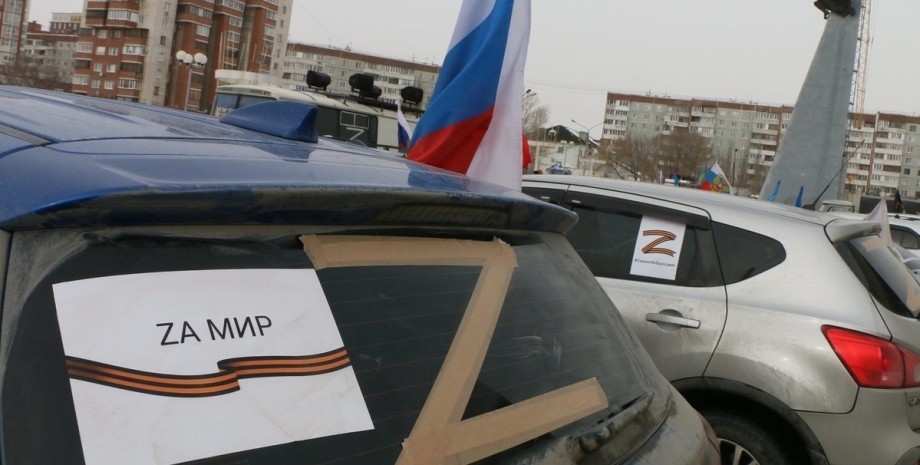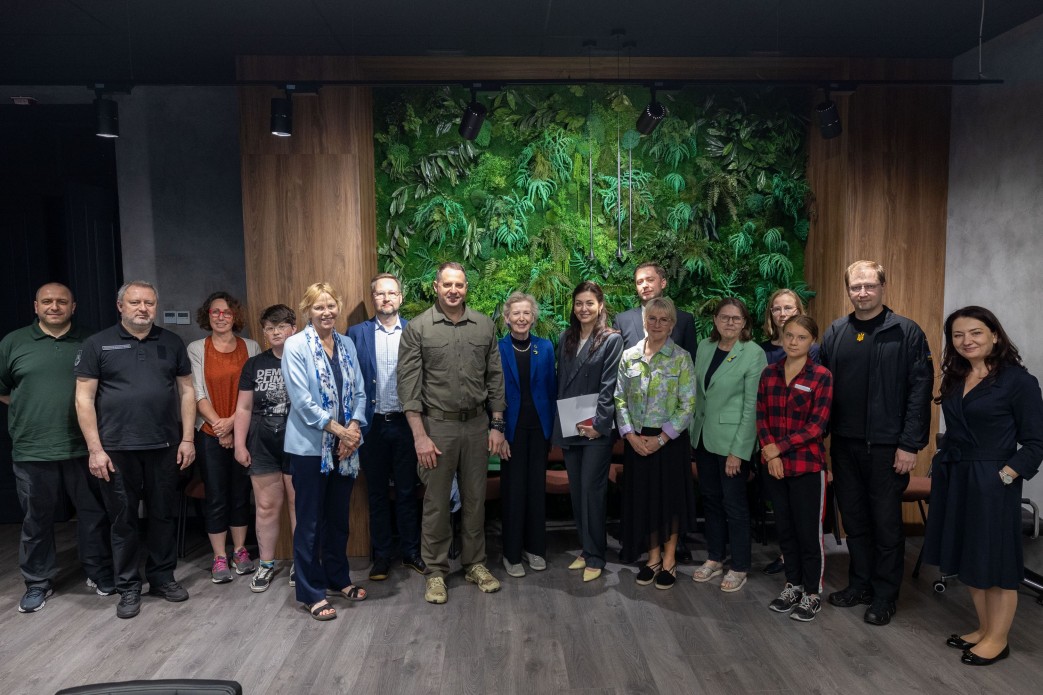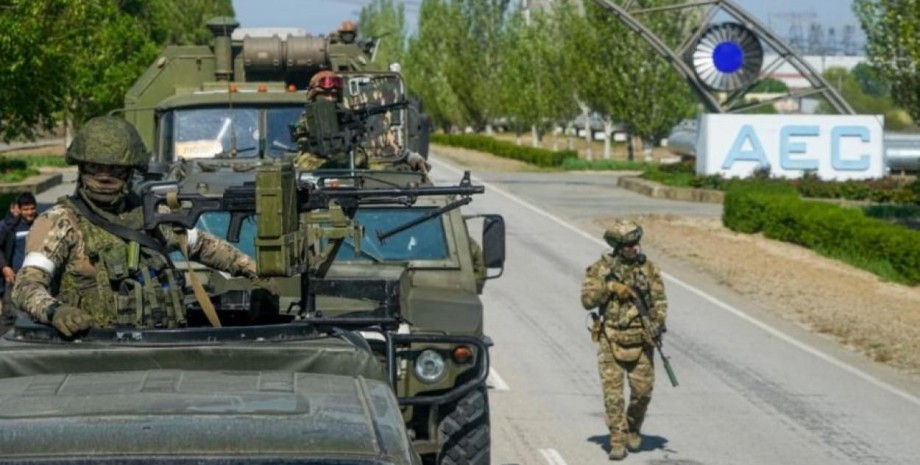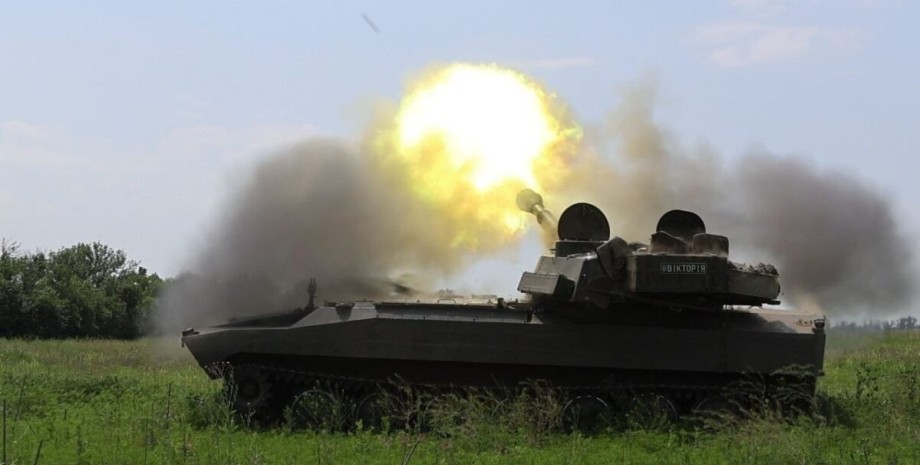
 By Victor Duda
By Victor Duda
When we arrived at the landfill, the Ukrainian unit was already on the landfill, throwing hand grenades in the open field less than 200 meters from us, and then just falling on the ground without shelter and watching how they explode. Then these soldiers began machine gun training, shooting from the position from the left ledge of the landfill through the entire landfill (without stop).
Our instructors conducted a circular training for about 150 meters at the landfill, and the shells whistled over our heads. When we approached the responsible person, the man said we would not worry; He was a Ukrainian Marines who survived Mariupol and the landfill meets NATO standards.
The courage and skill of the Ukrainian military is not in doubt, but this example is very indicative of the problem that the preparation of the Ukrainian Armed Forces is faced - the lack of a rooted understanding of how to carry out the same, consistent training. Focus translated the article by experienced military and instructors Eric Kramer and Paul Schneider about what to make the Armed Forces of Ukraine for victory.
After nine months of study of all units of the Armed Forces of Ukraine, including land troops, border service, the National Guard, Marines, Special Operations and Territorial Defense Forces, we have noticed a number of general trends: lack of command of missions, effective training and general -military operations; non-standard logistics and maintenance; And even improper use of special operations.
These trends have already affected the resistance of Ukraine and can interfere with the success of the offensive. How can Ukraine change the formula in its favor? The answer is a unified all -military training with a mission at the command level at the level of the brigade, which the Ukrainian armed forces can achieve with the help of a thirty -day program "Prepare the Instructor".
This training can be carried out by Western military instructors who are contracting with Ukrainian military veterans in Ukraine. Such training will allow them to carry out general military operations and use the benefits that the inflow of the advanced Western military equipment, and I hope to allow Ukraine to overcome the benefits of Russia in live power.
From our experience, many units and headquarters of the Ukrainian Armed Forces do not encourage personal initiative, do not strengthen mutual trust and do not ensure the principle of decentralized command (Mission Command). As Michael Coffman and Robman in Russia CONTINGENCY have recently been told, the old Soviet mentality is stored in the Ukrainian Armed Forces, according to which most decisions are made at higher levels.
As for military leaders at the team level, we have the impression that younger officers are afraid to make mistakes. During our training sessions with field officers, we are often asked what punishment is provided for the failure during the tasks or the wrong decisions.
We are also repeatedly asked at every stage of planning or operation: "Who has the right to make this decision?" They are surprised that US battalion captains (staff officers who control the current battalion operations) have the right to make decisions or give orders on behalf of the battalion commander. During the exercises, we have repeatedly observed that the planning process of the Ukrainian military requires separate orders for each phase of the operation.
For example, a defense battalion cannot have a counterattack even if attacked. It has no potential backup tasks such as "be prepared for counterattack" that are planned in advance to use unexpected opportunities. He has to wait for the order. Of course, the planning process of the Ukrainian military is based on the local doctrine, and in real combat it depends on the commander.
However, according to our observations, serious changes are taking place in the Officer Corps of the Armed Forces of Ukraine. Young officers understand that they should get rid of the old mentality, but continue to face the resistance of old officers, supporters of Soviet doctrine and centralized planning. Michael Coffman and Rob Lee made similar observations after his last research trip to the country.
By teaching all the components of the Ukrainian Armed Forces, we are constantly faced with the lack of experienced sergeant. You can often see how field officers calculate the staff during training and organize their nutrition. In the United States, years are coming to prepare the sergeant. The platoon level sergeants have at least ten years. In the US Army, the lieutenants are headed by platoons, but they are precisely a platoon sergeant, which is told in Defense News.
In Ukraine, a platoon commander, who has just graduated from the Academy, must manage his platoon and teach it. Without effective sergeants, a decentralized command at the mouth and below is almost impossible, it is the sergeants that are directly responsible for the education, mentoring and training of soldiers. The current philosophy of preparation of the Ukrainian Armed Forces is based on the old Soviet model. Large -scale battalion level exercises occur in orchestral and choreographic mode.
During several exercises, we saw the company commanders watched the exercise from afar and only rarely interfered. They acted faster as observers than direct participants. This philosophy is changing and, as noted in Russia's contingence, depends on the generation. Young officers are more open to the Western military style of leadership, while the older generation officers adhere to the Soviet doctrine.
Despite these trends, we have not yet seen true general military exercises with the participation of infantry, artillery and armored vehicles that work together. The synchronization of all these different elements to achieve maximum military effect, to avoid fire by their misleading requires multiple training at all levels of command, which allows commanders to make mistakes and work on processes.
One of the critical problems is how the Ukrainian military and how organized centers of training of soldiers train. In the Armed Forces, each department has its own training centers, staff, academies and training modes. They rarely exchange instructors or, for example, conduct training of units of the National Guard at the Army Center. We directly asked our Ukrainian colleagues, whether we can bring several soldiers of territorial defense forces to study on the basis of the National Guard.
We were told that this is not possible because they are not the National Guards. This system is extremely ineffective. It leads to irrational resources, as well as wild breaks in competence of agencies and units. In addition, the agencies in the Armed Forces of Ukraine do not carry out planning and preparation on the basis of the same doctrine or tactics, techniques and procedures.
As a result, when Ukraine's troops are conducting joint operations, misunderstandings, distrust and misunderstanding are very common. As noted on this site, there are several volunteer organizations that are preparing the Ukrainian Armed Forces. Preferably, training is focused on the basic skills of soldiers at the level of the mouth or platoon. The training is scattered and haphazard, and the quality of learning is different. NATO conducts training of individual units and soldiers outside Ukraine.
Although such preparation can be effective and necessary to obtain certain special skills, such as tanks and Himars crews, it detaches units and soldiers from the front line for several weeks or even months. Commanders cannot afford to release units and soldiers for a long time. According to our field research, this is a direct need, since most of the units we train go to the front the next day after completion of the workout.
We also believe that educational activities outside Ukraine are not consistent and do not use joint training programs. Moreover, these foreign educational activities adhere to the doctrines of their countries of origin. Although they are trying to take into account the realities of Ukraine, many of them do not fully adapt their curricula before the Ukrainians are fighting, especially with Ukrainian doctrinal and legal restrictions on operations.
A critical problem for the Ukrainian armed forces is that they do not conduct consistent general military operations. The absence of combined synchronized operations leads to great losses in living strength and technology, and sometimes to a bad result.
According to the results of our conversations with the commanders of Ukrainian mouths and our instructors who fought in the Ukrainian Armed Forces, tanks are used more than mobile artillery, not in combined infantry operations, where armored vehicles come into battle just before the infantry. We saw with our own eyes the trunks of tanks (and artillery), torn from permanent shooting for maximum range or over -moderation without maintenance and replacement.
Michael Coffman made similar observations. It is assumed that the relationship between armored vehicles and infantry should be symbiotic, but it is not. As a result, the infantry conducts advanced attacks or operates in urban areas without protection and fire power. In addition, artillery fire is not synchronized with maneuvers. Most units do not communicate directly with the support artillery, so there is a delay in setting fire tasks.
We were told that because of the problems with the communication of the unit use runners to transmit fire tasks to artillery batteries. Most military operations are not divided into battle phases. For example, fire tasks and maneuvers are planned separately from the actions of infantry units, and infantry operations - separately from the supporting artillery.
This approach also extends to coordination of the actions of neighboring units, which is either absent or rare, which leads to a large number of cases of fire by its own. Commanders are suspicious of neighboring units and therefore do not dare to transfer to related units important information that can be used against them. These problems are exacerbated by unreliable units and top management. In the Ukrainian Armed Forces, many radio stations that are vulnerable to muffling are used.
In addition, the battalion's task is mainly independent mouth operations that are not focused on basic efforts in combination with supportive effort. The armed forces do not combine firing efforts, so operations are fragmentary and separated. Separate tasks do not support each other, and the tasks of lower -level units are not "invested" in higher -level tasks. Provision is also not synchronized with the operations performed.
The assistance of the event was critically important for Ukraine's defense. However, the variety of equipment now uses Ukraine has led to significant problems with logistics and maintenance. From our experience, the Ukrainian military disassemble new equipment that arrives in Ukraine to service the equipment that has already been deployed on the ground. As a result, the leading parts receive only a small percentage of what goes to the country.
For example, a 50 -caliber machine gun arrives in Ukraine with additional barrels, spare parts, manuals and accessories, but until it gets to the Donbas, it will only leave the barrel. As others have written, the Ukrainian military is watching YouTube videos to learn how to use new and unfamiliar equipment. In addition, the mentality of the distribution of supply in Ukraine is a careful attitude towards resources.
Most battalion supply officers are appointed to a post without training at an officer school. They can have a helper and several vehicles, but it all depends on the personal initiative. Maintenance is based on disassembly for spare parts, exchange between units and recovery on the battlefield. There is no constant flow of repair parts or maintenance system only at the level of units, battalion, crew and warehouse.
The skill of repairmen depends more on personal abilities and less - on the centralized training of mechanics. All agencies have maintenance courses, but it helps to create a ready -made reserve of mechanics. This attitude to maintenance is reflected in the use of armored vehicles, mechanized vehicles and artillery in battle. The units protect these tools and use tanks more as artillery than in all -military operations with infantry.
Combat vehicles deliver soldiers to the front, but often retreat, falling under fire. We also saw the trunks of the 155-mm howitzers supplied by the Western countries because they were used at maximum range (using maximum powder charges) so as not to get under counter-battery. In the future, the Ukrainian counter -offensive will effectively use these funds to success, and during offensive operations, the attacking usually loses more tanks, cars and artillery than the defending one.
This will require changes in the mentality. The lack of coordinated maintenance and logistics is also reflected in health care. Medical evacuation and medical care are haphazard. Experienced Ukrainian doctors have repeatedly stated that many of the evacuated ones would survive if they were provided in a timely manner at the last stage. The Armed Forces of Ukraine can solve this problem by systematizing the process of logistics.
The Ukrainian forces of special operations (SCOs) differ in their capabilities, preparation and specialization. Unfortunately, many of them are used as a regular infantry. This negates the skills that these units make specialized. Due to the high intensity of hostilities and the Russian counter -offensive, special operations are often found in the trenches, and they do not perform the traditional tasks of the special forces of the type of raids, intelligence and ambushes.
These disparate efforts lead to a high level of loss and lack of SCO missions related to suddenness or secrecy, which can support and form operations of the battalion and crew of ordinary forces. Traditionally, these soldiers are trained and have less fire power than ordinary units, so you lose a valuable asset that takes time to recover.
Special forces units of Ukraine, consisting of international volunteers, offer their services to commanders of ordinary units without linking to a strategic or prompt goal. One example of such a mission is the commander of the ordinary brigade, who reported to his command, which occupied the settlement, reflected from the Russians.
When he realized that he had the information he had false and they stopped, he asked the international unit of the SCO to enter the captured village and take a picture of the Ukrainian flag installed on top of the building in the center of the village. Special operations units are rapidly depleted, and the replacement units do not have sufficient preparation and experience for the real MAGs of the SCO. The solution of these problems requires redistribution of resources and changes in mentality.
This is much more difficult than allocating more resources and spending more money. We recommend a centralized planned, grassroots, synchronized training program based on 20-30 days of preparation for each brigade. This approach is known as the "Instructor Training Program" and is designed to create a group of instructors, who will later be able to continue their training in new Ukrainian officers who take place through the program.
The training program should have sufficient flexibility to make adjustments depending on changes in the battlefield and differences between units. It is very important that the training is in Ukraine using local and foreign instructors for Western and Soviet equipment. The main unit of the Armed Forces of Ukraine is a light infantry battalion.
The training program focused on this formation should be the basis for all preparation and be organized in the form of a series of 10-day training courses, which follow 8-day final training. The honing of the basics and planning at the battalion level will lead to success on the battlefield and reducing losses.
Ця інструкція включає 10-денну індивідуальну підготовку солдатів для рядового та сержантського складу та 10-денний курс командира роти/взводу.
На першому курсі основну увагу буде приділено основам солдатської служби та тактиці легкої піхоти, а молодші офіцери зосередяться на питаннях керівництва та логістики.
На рівні батальйону курс буде зосереджений на наступальних та оборонних операціях роти у сільській та міській місцевості. Третій 10-денний курс — це курс планування операцій бригади/батальйону та штабу.
Цей курс буде присвячений основним наступальним та оборонним операціям батальйону, функціям та операціям штабу, а також циклу планування тривалістю від 12 до 24 годин. Процес планування повинен бути скороченою версією процесу прийняття військових рішень у США/НАТО.
Більшість операцій в Україні планується менш ніж за 24 години або за кілька годин. Українська доктрина та правила також вимагають, щоб командир затверджував кожен крок місії, тому потрібний процес, адаптований до України. Навчання включатимуть планування міських операцій.
Будуть включені загальновійськові операції, включаючи інтеграцію пожежників, інженерів, безпілотників та бронетехніки. У межах курсу також буде розроблено архітектуру зв'язку на рівні бригади та батальйону.
Крім того, цей курс має бути спрямований на інтеграцію планування логістики у всі фази операції, а також на підготовку логістів із внутрішніх сил та засобів.
Створення окремого взводу постачання та матеріально-технічного забезпечення для кожного батальйону, що включає спеціальну медичну евакуацію, матиме вирішальне значення.
Кульмінацією навчань стане 8-денний курс колективної підготовки бригади/батальйону/роти, що включає загальновійськові навчання, починаючи з планування та закінчуючи ротами у польових умовах.
Ці навчання повинні передбачати "вільну військову гру", коли кожне рішення має наслідки, а командири та штаби повинні пристосовуватися до кожної зміни.
Для українських сил спеціальних операцій навчання зосереджено на трьох основних місіях: Основна увага має бути приділена детальному плануванню та цим трьом місіям. Це навчання може бути завершено протягом 25 днів.
Перші 15 днів мають бути присвячені базовій піхотній тактиці, а також медичним, інженерним та нічним операціям. Останні 10 днів, на нашу думку, мають бути присвячені плануванню та операціям.
Усі тренування повинні включати періодичні візити зі штабу на рівні бригади та батальйону для проведення повторного навчання та консультацій з операцій.
Крім того, по всій східній частині України мають бути розміщені мобільні навчальні та ремонтні групи, що спеціалізуються на системах, які потребують технічних навичок та обслуговування.
Вони можуть проводити навчання та технічне обслуговування бронетехніки, бронетранспортерів, протитанкових систем, зброї з екіпажем, радіостанцій та переносних зенітно-ракетних комплексів.
Ці навчальні та ремонтні групи проводитимуть навчання для окремих солдатів та екіпажів за лінією фронту у районі штабу бригади. Ми також рекомендуємо програму наставництва для старших офіцерів на рівні генерального штабу та регіональних командувань.
Українські Збройні сили не мають дивізій, а діють у складі регіональних командувань. У програму наставництва можна включити колишніх старших офіцерів західних країн для надання консультацій щодо планування та управління місіями.
Ця програма навчання амбітна, але здійсненна. Наша компанія, Група підтримки оборони України, за п'ять днів ефективно навчила батальйони та штаби швидкого планування на основі модифікованої версії процесу ухвалення військових рішень.
Це включало один день теоретичної підготовки, одноденний інструктаж під керівництвом курсантів і три дні вправ з планування під керівництвом курсантів, включаючи аналіз місії, розробку курсу дій, варгеймінг та підготовку наказів.
Довгострокове вирішення проблеми навчання включає об'єднання навчальних курсів. Нині кожне відомство має свою власну систему шкіл для всього, включаючи бронетехніку, медицину та управління безпілотниками.
Таке розрізнене навчання призводить до неефективності та неузгодженості зусиль. Збройні сили України, чи то Міністерство оборони чи внутрішніх справ, повинні призначити конкретну школу/відомство як представника з кожної конкретної навички чи системи озброєння.
Цей навчальний заклад навчатиме всіх курсантів, будь то Сухопутні війська, Прикордонна служба, Національна гвардія, морська піхота чи війська територіальної оборони.
Ця зміна вимагатиме культурного зсуву на рівні закону Голдуотера-Ніколса 1986 року, який вимагав "об'єднаності" у збройних силах США. Україна перебуває в екзистенційній боротьбі за своє існування, і міжвідомче суперництво слід відкласти у бік заради блага країни.
Україна вела переважно оборонну війну, а тепер переходить до наступальної. Співвідношення військ у наступі та обороні може становити 3 до 1 (6 до 1 у міських боях). Якщо додати до цього міські бої високої інтенсивності, це співвідношення збільшиться.
Україна ще має провести великі наступальні операції у великому місті або здійснювати переправи через великі річки.
Обидві ці операції є дуже складними і ресурсо- і людиноємними, для їх успішного проведення потрібна тісна синхронізація всіх сил і засобів, включаючи піхоту, бронетехніку, артилерію, логістику та медицину.
Українські Збройні сили показали відмінні результати, але їм необхідно переорієнтувати свою підготовку та операції на застосування комбінованої зброї та навчитися діяти ночами. Термін дії західної підтримки України спливає дуже швидко.
Крім того, воля українського народу підтримувати високий рівень втрат є дуже високою, але не безмежною. На боці російських військових багато людей та часу. Змінити ситуацію на користь України можна шляхом проведення загальновійськових операцій та навчання.
Історія неодноразово показувала, як добре навчені і правильно керовані військові можуть перемогти погано навчену армію.
Найскладніше — змінити менталітет старших командирів, які провели десятиліття у радянській системі, та перейти до філософії децентралізованого командування, яка дозволяє виявляти гнучкість та ініціативу з розумінням того, що це призведе не до катастрофи чи тюремного ув'язнення, а до перемоги на полі бою.
Ерік Крамер — директор та співзасновник Групи підтримки оборони України, розташованої у Києві.
З липня 2022 року перебуває в Україні, навчаючи українські Збройні сили на всіх рівнях підрозділів, починаючи з відділення, взводу, роти, базових навичок солдата та тактики малих підрозділів та закінчуючи плануванням та операціями батальйону/бригади.
Він колишній офіцер армійського спецназу, який вийшов у відставку у 2014 році після 26 років служби. Його останнє місце служби було в Пентагоні в офісі помічника міністра оборони зі спеціальних операцій та конфліктів низької інтенсивності.
Офіцером спецназу він служив в Афганістані, Боснії, Конго, Іраку та Косово на різних рівнях командування — від загону до еквівалента батальйону. Пол Шнайдер — другий співзасновник Групи підтримки оборони України.
Він пробув в Україні багато місяців, навчаючи українські Збройні сили (аж до старших інструкторів військових академій України) тактичних та стратегічних операцій, процесу прийняття військових рішень та звичайних бригадних/батальйонних операцій у великомасштабних бойових діях.
Шнайдер — колишній командир спецназу США, має великий досвід навчання та ведення бойових дій у різних місцях.
Він вийшов у відставку у 2021 році, щоб зайнятися гуманітарною діяльністю, яка включала евакуацію сотень афганців та американських громадян під час виведення військ США з Афганістану.




















Všetky práva vyhradené IN-Ukraine.info - 2022